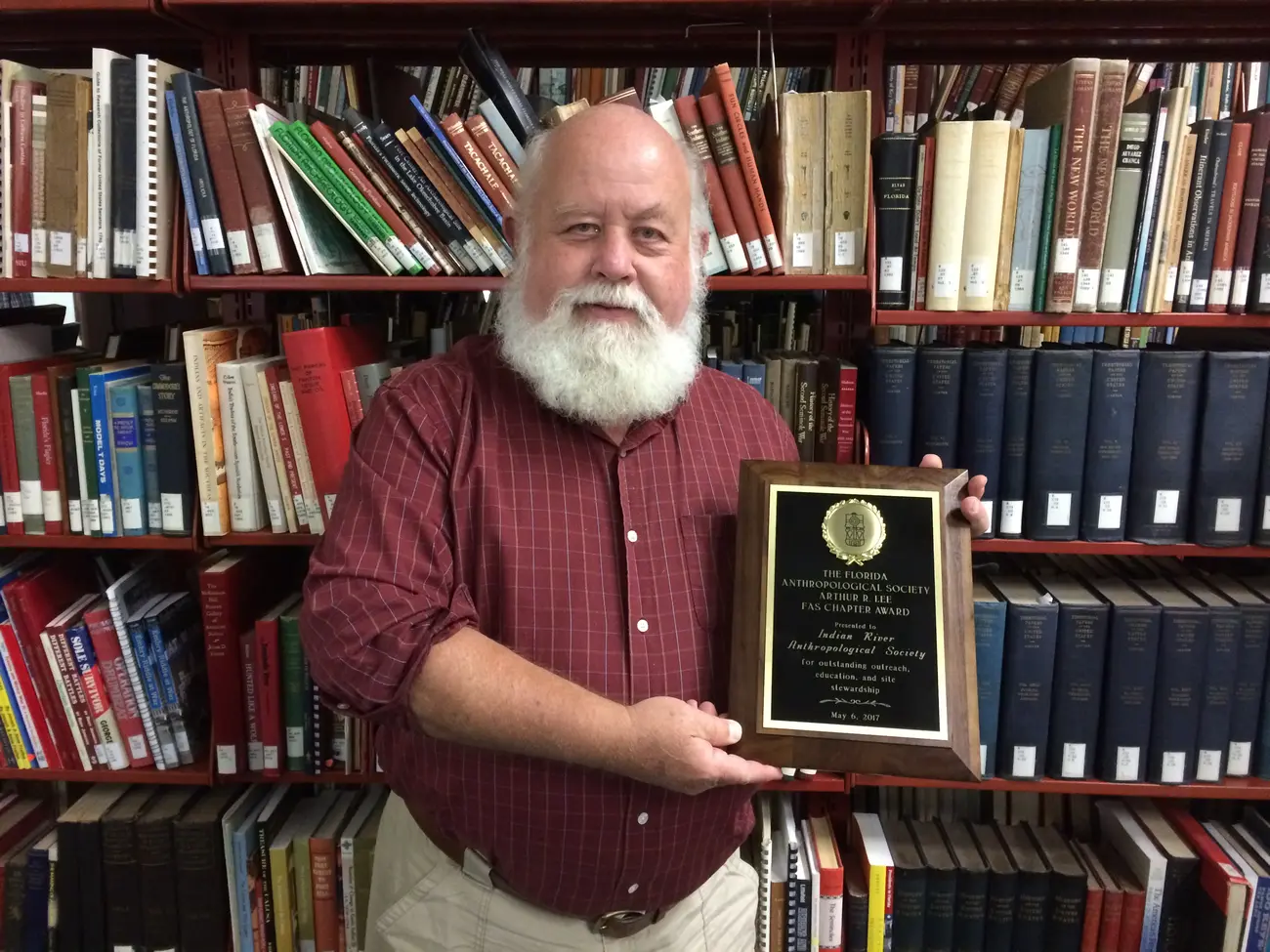Brevard County is home to an impressive list of important archaeological excavations including a unique prehistoric pond cemetery, numerous Indian mounds, paleontological sites, colonial era shipwrecks, and pioneer homesteads.
Since 1953, members of the Indian River Anthropological Society have been participating in the discovery, excavation, and recording of archaeological sites in Brevard County.
“Operating primarily in Brevard County, we have, over the years, also provided services in Volusia, Seminole, Orange, Osceola, and Indian River Counties,” says Bob Gross of the Indian River Anthropological Society. “IRAS provides, at no cost to the Brevard County government and its municipalities, many tasks required by statute under the provisions of the National Historic Preservation Act of 1966, as amended, and as directed by local statute and Brevard’s Comprehensive Plan to the Brevard County Historical Commission.”
The Indian River Anthropological Society has been a chapter of the statewide Florida Anthropological Society since 1956.
At the FAS Annual Meeting on Saturday, May 6, in Jacksonville, IRAS was presented with the Arthur R. Lee FAS Chapter Award for outstanding outreach, education, and site stewardship.
“Members of the IRAS were gratified to learn that their years of devotion to the study of Florida’s, and particularly Brevard County’s anthropological and archaeological resources through investigation, documentation, preservation, and education has been recognized at the highest levels,” Gross says.
Thirty-five years ago, one of the most significant archaeological discoveries in the world was made in Brevard County. During construction of the Windover Farms subdivision in Titusville, an ancient pond cemetery was discovered. The site contained 168 intact human burials, carefully positioned and wrapped in the oldest woven cloth found in North America.
The human remains uncovered at the Windover site were between 7,000 and 8,000 years old, making them 3,200 years older than King Tutankhamen and 2,000 years older than the Great Pyramids of Egypt.
The anaerobic environment and ph balance of the pond allowed for remarkable preservation of the remains. Ninety-one of the skulls contained intact brain matter.
Members of the Indian River Anthropological Society participated as volunteers at the Windover Dig. Vera Zimmerman of IRAS wrote identification numbers on bone fragments, and conducted tours of the site for the public.
“I was just extremely lucky to be living here when that find was made, because it was a once in a lifetime opportunity to work on a dig like that,” Zimmerman says. “We had people coming in from all over the world. They had a conference here. It was just outstanding. It told them things that they didn’t know about the Archaic Period. They still believed before that people were living a pretty nomadic lifestyle, following game. The Windover Dig showed they were living a fairly settled village life.”
The origins of IRAS go back to 1951, when sixteen Spanish silver coins were found on Playalinda Beach. Local archaeologist E.Y. “Dick” Guernsey was consulted, and a group of interested residents were inspired to form an archaeology club. The members were mostly newcomers to the area, brought here by the recently constructed Patrick Air Force Base and the long range missile proving ground at Cape Canaveral.
As construction rapidly increased in Brevard County to accommodate the population explosion accompanying the burgeoning space program, a growing number of Indian mounds and other historic sites were being uncovered.
By 1953, the Indian River Anthropological Society was meeting monthly under the direction of Dr. Guernsey. He led the group to become a chapter of the Florida Anthropological Society, as described on the front page of the Melbourne Times on April 10, 1956:
“A chapter of the Florida Anthropological Society has been organized in Brevard County, and persons interested in digging up bones and other objects of the long dead past may soon be invited to join…They are planning to map part of the east Coast and locate ancient Indian mounds which will be explored in a scientific manner.”
The award-winning Indian River Anthropological Society continues its work today.
